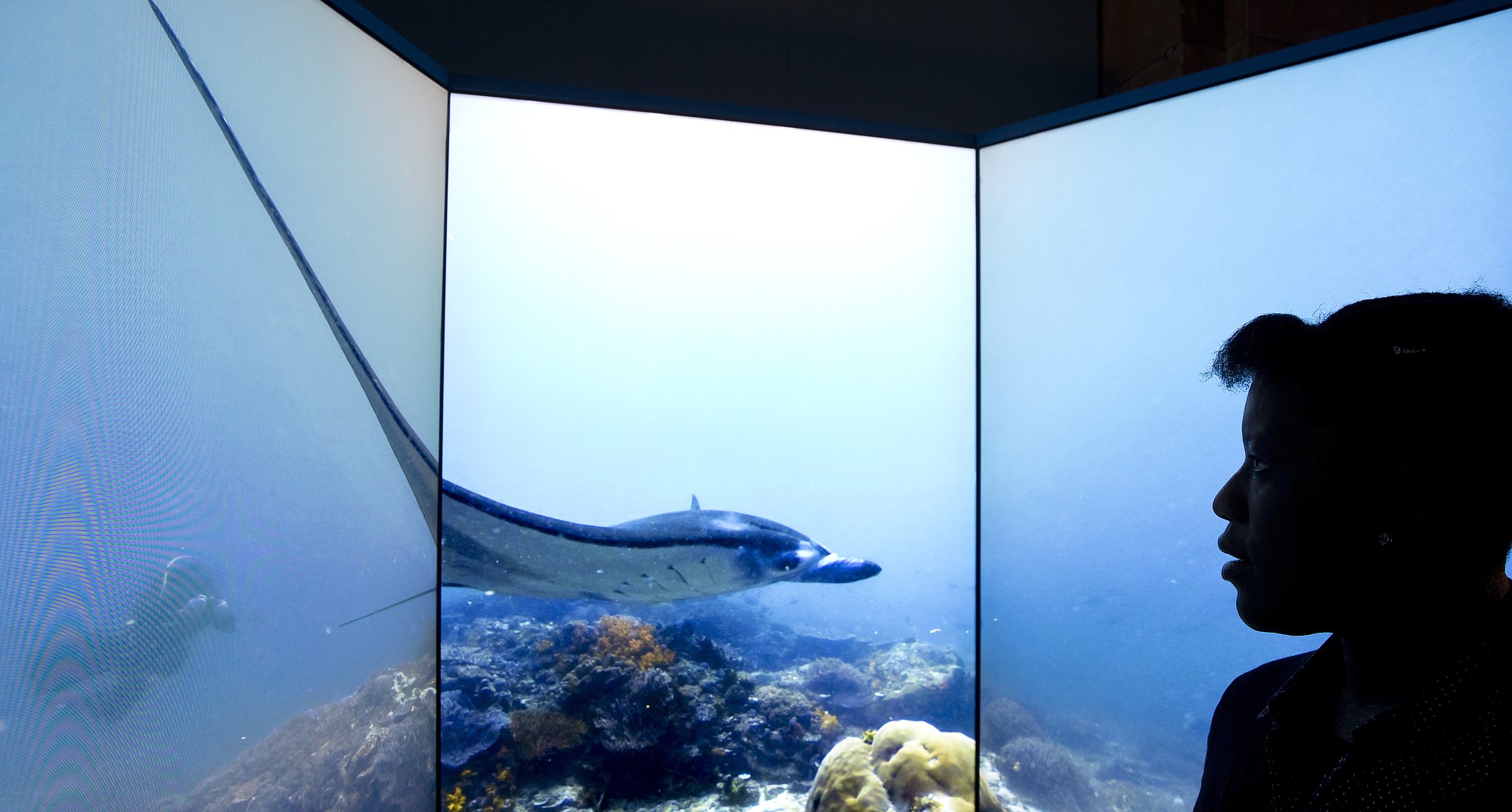LONDON — If you’ve ever wanted to see coral reefs but don’t fancy getting wet, then London’s Natural History Museum may be the place for you.
The museum’s new show plunges into the underwater world and features a “virtual dive” that provides a 180-degree view of five coral reefs controlled by a joystick, including one vista with a manta ray in Komodo Island, Indonesia.
“We know more about outer space than we do about the oceans,” said Miranda Lowe, the museum’s collections manager for marine invertebrates. She said the patchy health of coral reefs globally could have dramatic consequences for the thousands of species of marine life that depend on them, and added the recent cyclone in Vanuatu could spark a massive bleaching of corals if water temperatures rise substantially.
The exhibit also includes six corals collected by Charles Darwin demonstrating his first-ever scientific theory about how coral reefs are formed. Hint: It involves volcanos.



